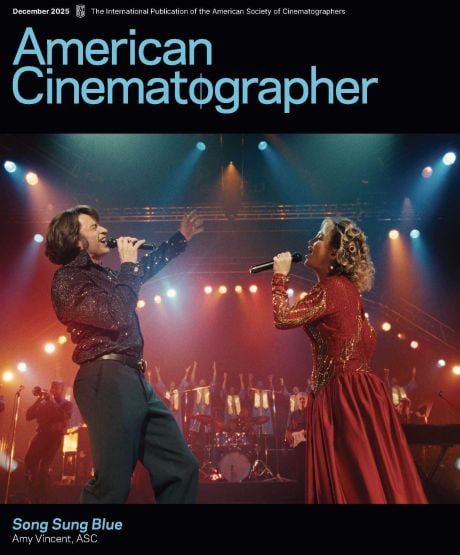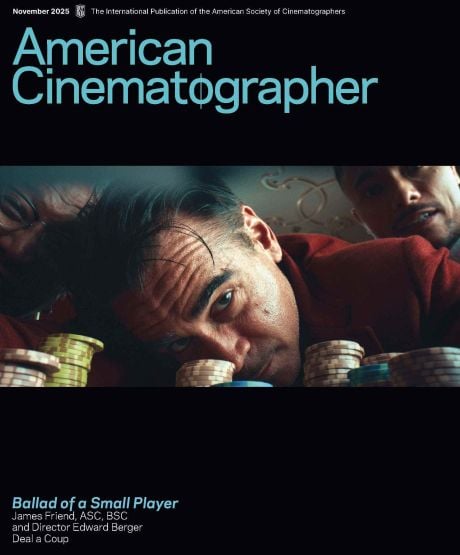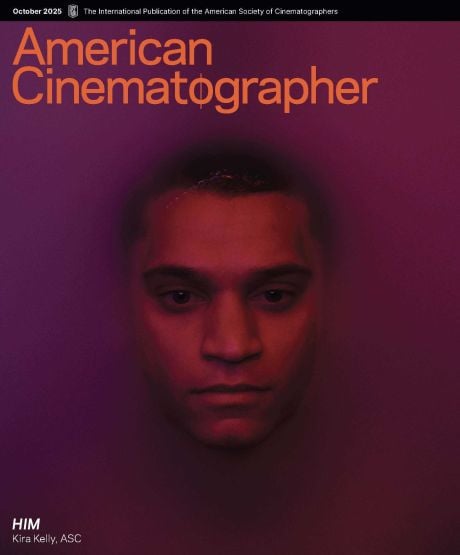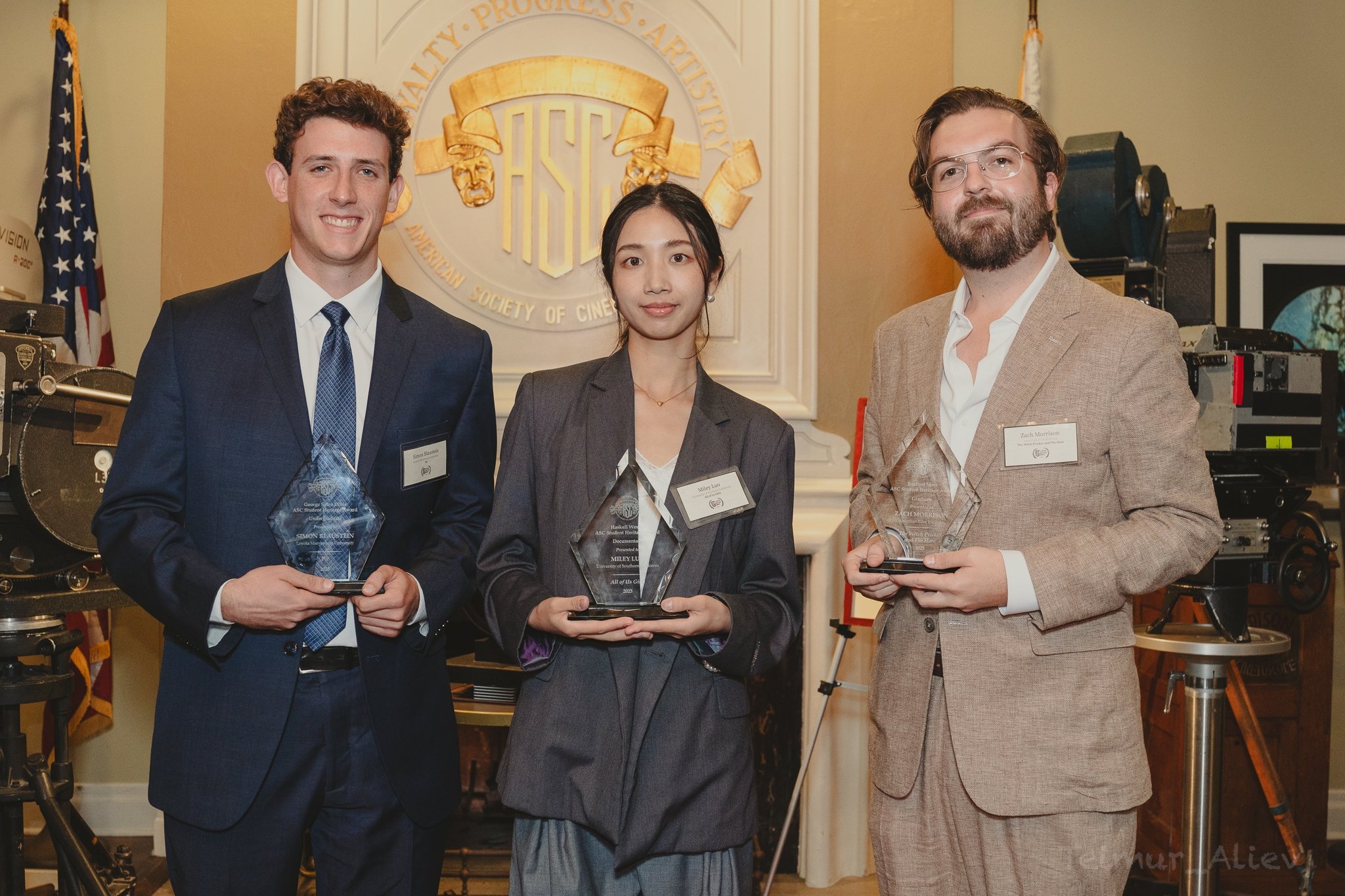
2025 ASC Student Heritage Awards Celebrate Cinematography’s New Bright Lights
The event presented three young filmmakers with prizes in their respective categories, and recognized outstanding new work from 13 nominees.
Since 1999, the ASC Student Heritage Awards have honored the work of up-and-coming cinematographers at the university level. The awards are a pillar of the Society’s ongoing commitment to recognizing and nurturing the next generation of filmmaking talent. This year’s ceremony was held at the ASC Clubhouse in Hollywood on October 12, with a host of ASC members in attendance, alongside nominees from undergraduate and graduate programs around the country.
The ceremony was presided over by Society 2nd Vice President John Simmons, recipient of this year’s ASC Presidents Award. “These students are standout cinematographers,” Simmons told American Cinematographer. “Our members and staff put in a lot of effort to find out who these stellar cinematographers are, because they are a picture of the future. Hopefully, they will become members of the ASC and find themselves within the history of the Society.”
Simmons hosted on behalf of Society president Mandy Walker, who was unable to attend. In her stead, Simmons read a statement from Walker congratulating the nominees and winners; acknowledging the ceremony’s sponsors; and saluting the dedicated work of the ASC’s staff and Student Awards Committee members.
Before this year's nominees were introduced along with clips of their films, the awards’ sponsors were brought on stage to say a few words. Dan Perry, the sales and business development manager of digital cinema cameras at Sony and a longtime associate of the ASC, called the Student Heritage Awards a highlight for him every year. “It’s important for us as manufacturers to know what you like, what you don’t like, and where you’ve had successes,” he told the honorees. “Some of you have shot your projects on our cameras, and we will continue to support you.”
Taking the stage next was Gary Paz, the director of strategic partnerships at Cinelease. “The Heritage Awards are very important to us,” he said. “We support education.” He went on to tell the audience that each award winner would have access to $10,000 of Cinelease equipment for the next 12 months.
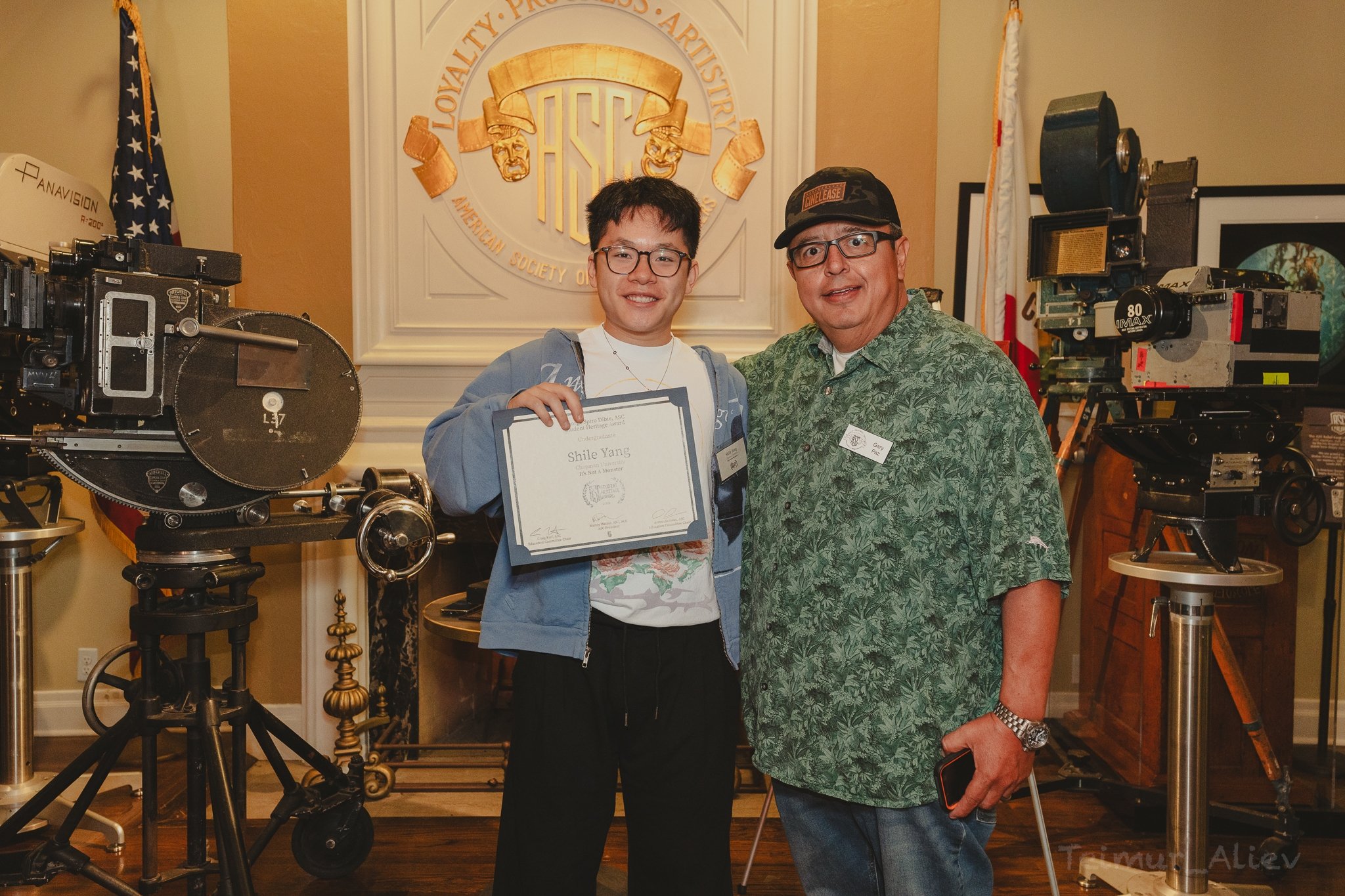
“Thank you for the future of beautiful cinematography going forward,” said Mark Bender, vice president of Nanlux America, who pointed to a brand new Nanlux light at the corner of the stage before announcing, “The winners are all going to take home our latest high-technology Nebula C8 fixture using 8 LED emitters for fabulous skin tone and color rendition.”
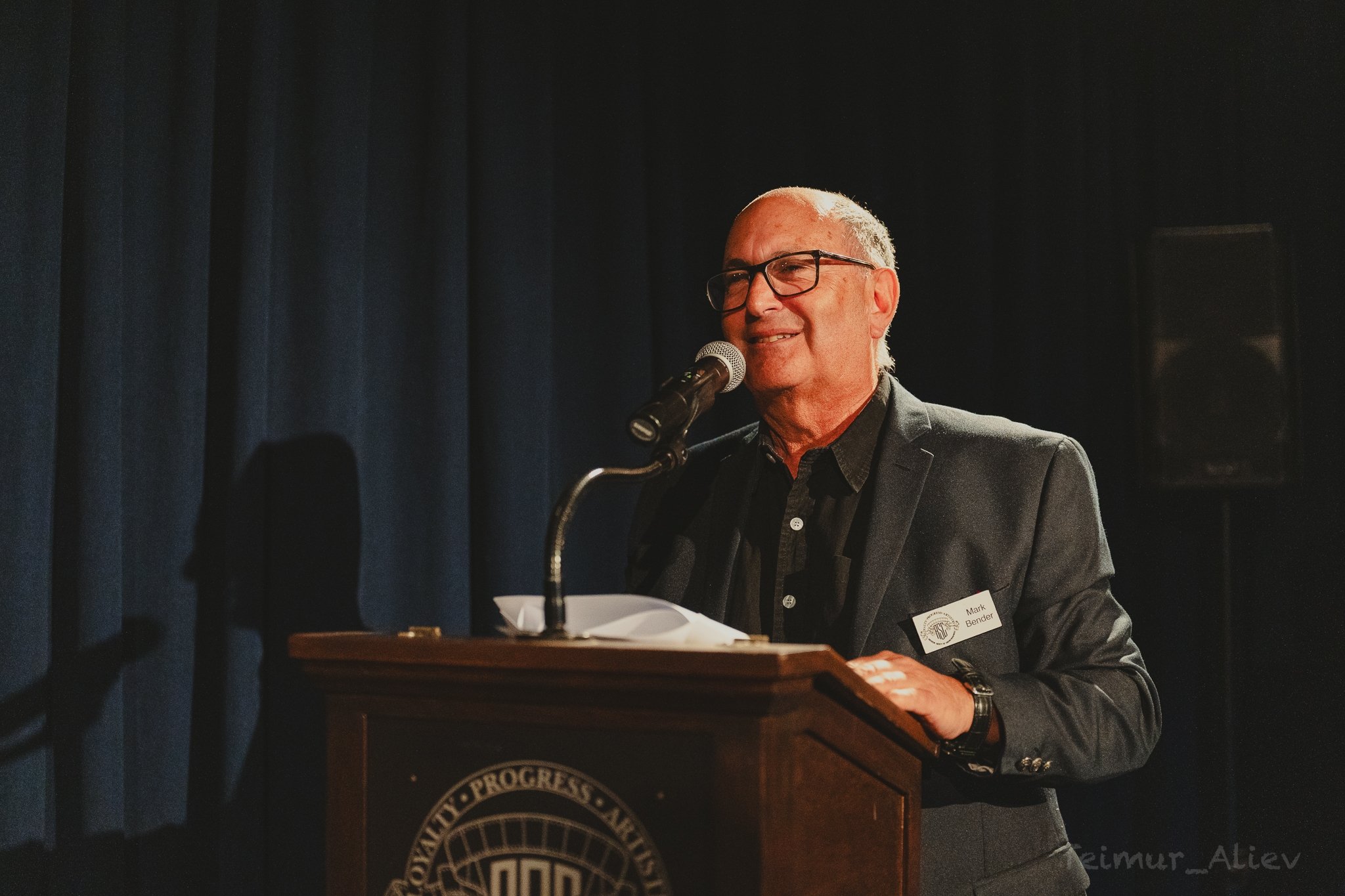
Craig Kief, ASC, a past Student Heritage Award honoree and current co-chair of the awards with Armando Salas, ASC (who was on location and unable to attend), joined Simmons onstage to acknowledge the ceremony’s legacy. “Each year, the Heritage Awards are dedicated to influential and esteemed ASC members who have advanced our art form,” he said. “This year, we honor the legacies of our distinguished colleagues Haskell Wexler, Georgie Spiro Dibie, and Rexford Metz.”
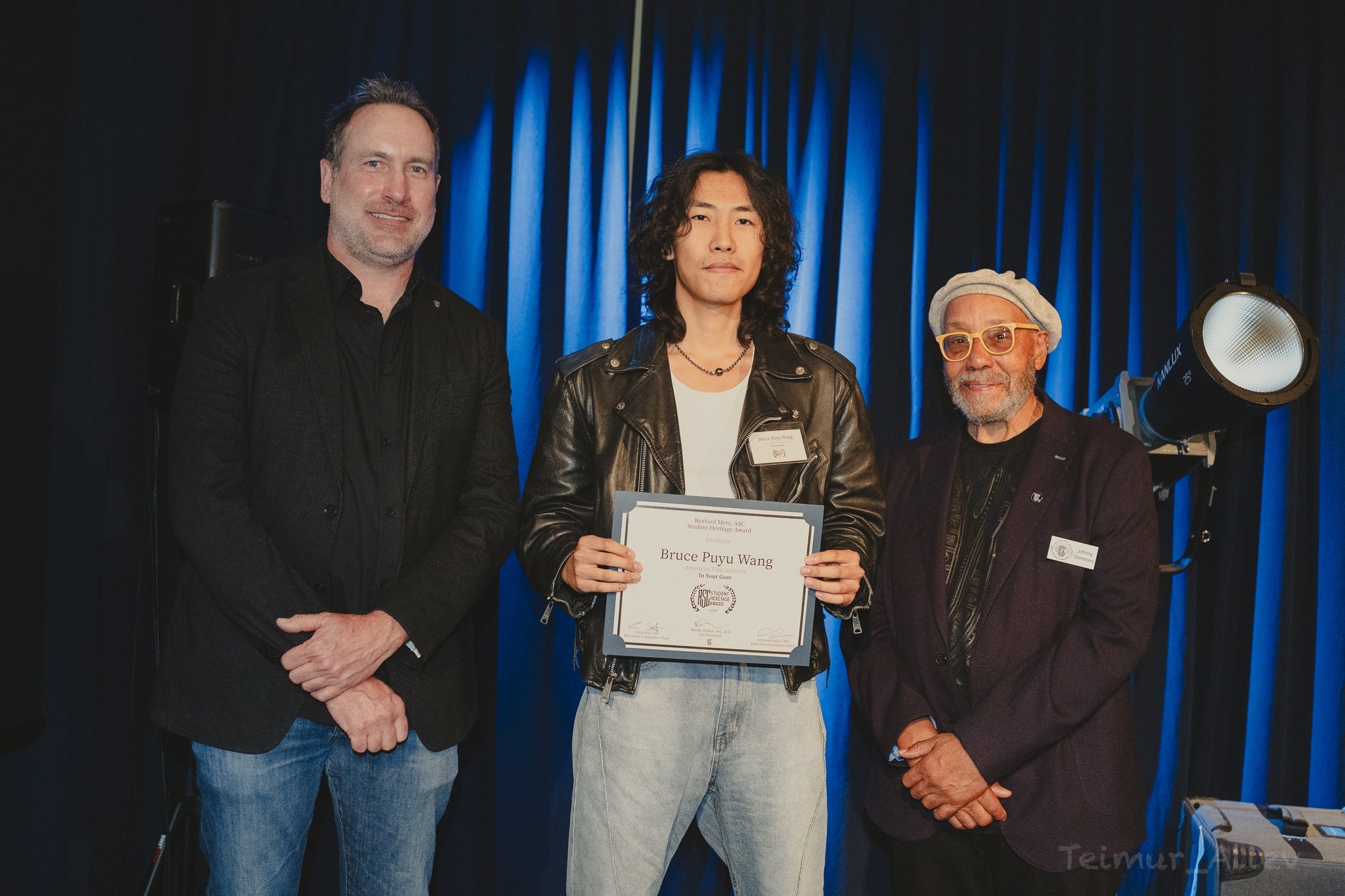
Wexler’s name is annually attached to the ASC Student Documentary category. One of the Society’s most celebrated members, Wexler is a five-time Academy Award nominee for his narrative feature work, and won Oscars for Who’s Afraid of Virginia Woolf? (1966) and Bound for Glory (1976). Wexler is also beloved for his contributions as a documentarian, having shot the Oscar-winning Interviews With My Mai Veterans (1970) and the Emmy Award-winning Paul Jacobs and the Nuclear Gang (1979). His groundbreaking experimental feature Medium Cool (1969), which he wrote, directed, and shot in a cinéma vérité style, remains a major influence for young filmmakers, and was cited by Adam Goldstick, a student from Loyola Marymount University, as a major inspiration as he accepted his nomination for the Documentary category onstage.
Shana Hagan, ASC, a cinematographer who has shot Oscar and Emmy-winning documentaries, presented the award to Miley Luo, who graduated with an MFA from the USC School of Cinematic Arts this year. Luo shot All of Us Girls, an intimate and vulnerable film about its director Yifeng Wang’s experience with sexual assault. While accepting her award, Luo acknowledged the sensitivity of the film’s subject matter, saying, “When you feel like you're telling a story that’s this important to the world, you can’t deny why you became a cinematographer.”
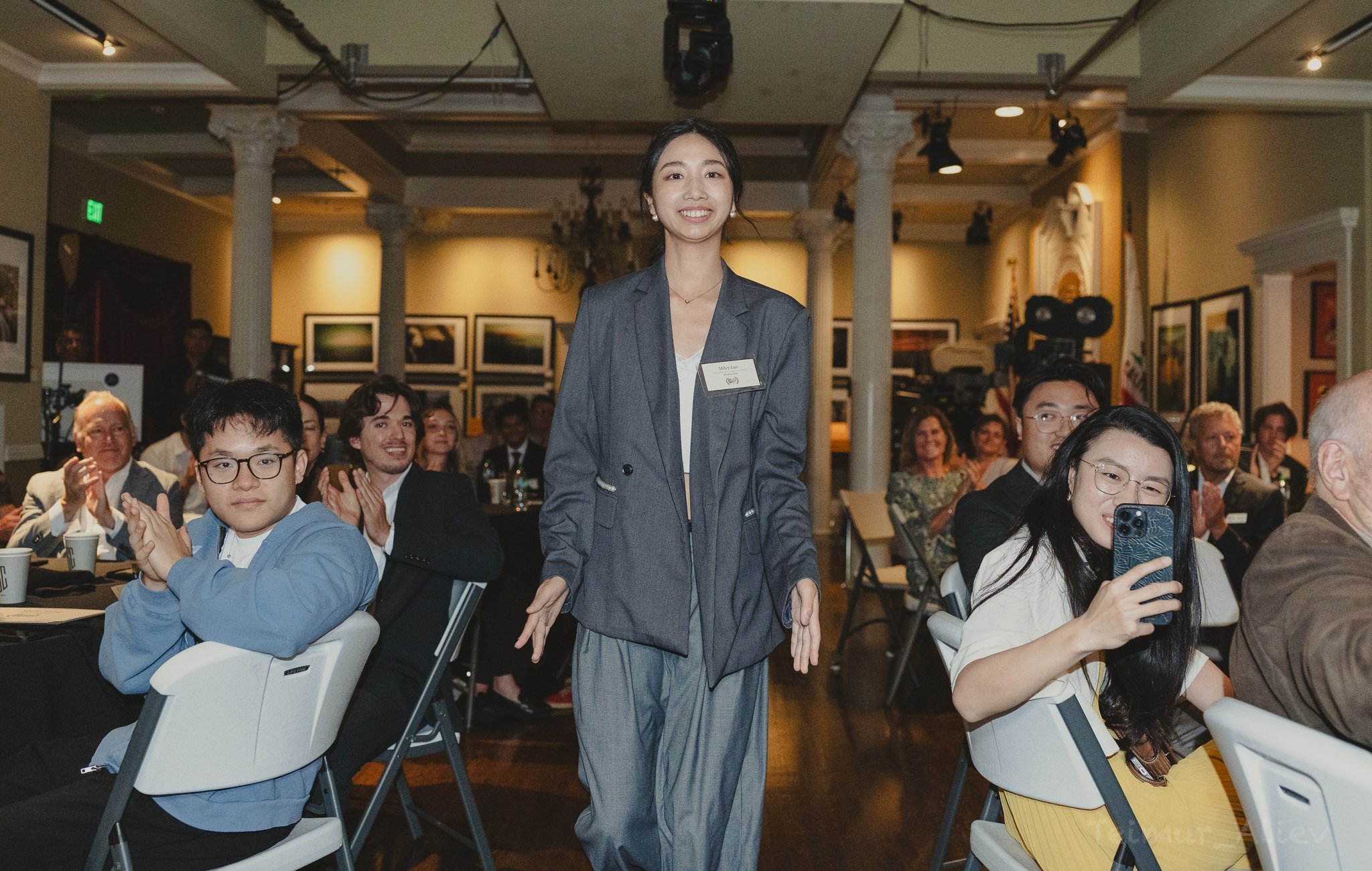
Luo told American Cinematographer that receiving the award makes her believe in the strength of cinematography even more. “I’m honored that the audience could feel the value of this story and the emotion and language [of] this film. I feel lucky to be able to capture all the emotions through the camera.” Luo shares that she shot All of Us Girls using the Sony FX9 with Sony’s 28-135 zoom lens — on a team of two, with only her 1st AC for support. “This camera was extremely convenient and gave me the power to be flexible,” said Luo, citing its internal ND for adjusting exposure easily, its internal zoom function for fast and stable focus range, and its wide dynamic range for shooting natural or practical light without issue.
The Undergraduate Award honored George Spiro Dibie, ASC, a cinematographer whose work on multi-camera episodic television netted him five Emmy nominations and seven additional nominations. A passionate labor leader, Dibie spent 25 years as IATSE Local 600 president. He was an ASC Career Achievement in Television Award honoree and chair of the ASC Education and Outreach Committee, known for his passion and dedication to teaching the next generation of talent.
“It’s an honorable quest trying to put some beauty in the world, tell stories that can inspire people, and maybe help them understand something about their lives and what they might do with it,” said Steven Fierberg, an award-winning cinematographer and the recipient of the Society’s 2024 Career Achievement in Television Award, after he took the stage to announce the Undergraduate Award winner. Fierberg praised the student work, saying, “I’m excited by everything that was shown today.”
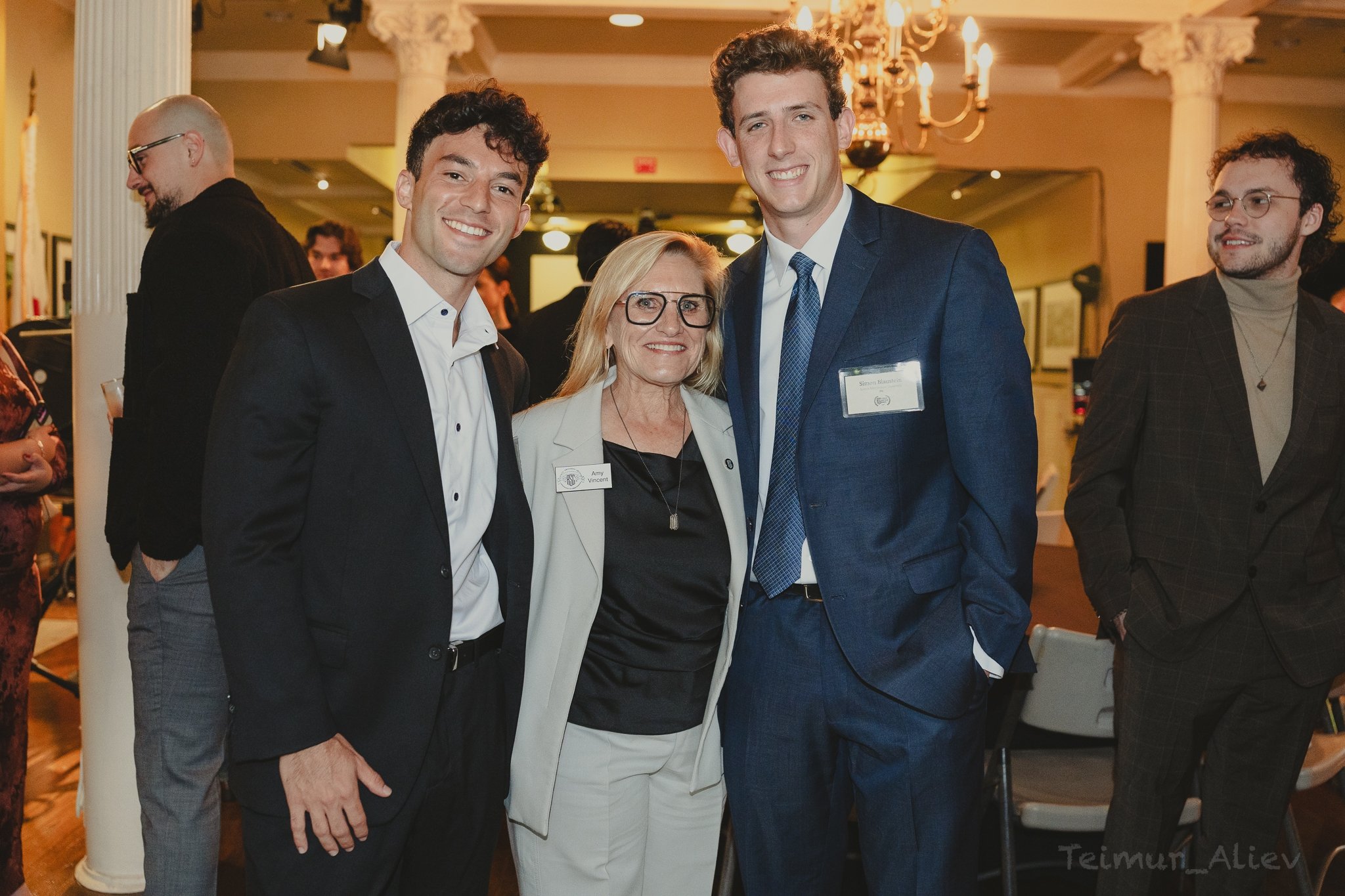
Fierberg announced Simon Blaustein of Loyola Marymount University as winner for his work on Pit, a hazy, dynamic, and at times, grotesque film about a love triangle. Accepting the award, Blaustein said, “This is because of all of the encouragement I’ve gotten.” Speaking to American Cinematographer, Blaustein acknowledged the film’s director, Severin Wessel, their crew, and instructors at LMU for helping achieve his vision on the project. Blaustein also mentioned Amy Vincent, an esteemed ASC member, who has not only served as his instructor, but has become a mentor and guiding light for his work. “She’s always a reminder of what’s possible and to keep pushing,” he said.
On Pit, Blaustein used the Sony Venice. “The Venice was huge for me,” he said. “We played around with all the Rialto features, figuring out what was the best way to approach filming. It’s just beautiful — the creaminess and skin tones are amazing. Blaustein also used Canon’s Cinema Prime lenses. “There’s a cleanliness to them that also shows the vulnerability in the skin,” he says. “This is a film all about grunginess and messiness, and with these tools we were able to reach into the shadows and reach into the details, especially in tight spaces.”
The ASC Graduate Award honored Rexford Metz, ASC, a master of 2nd-unit cinematography known for daring aerial and underwater work, especially for action sequences. From the winding, high-octane car chases in Bullitt (1968) to the in-water menace of a hulking, mechanical shark in Jaws (1975), Metz created helped those films’ directors of photography (ASC members William A. Fraker and Bill Butler, respectively) create unforgettable cinematic moments as a stalwart camera operator. Metz lent his talents to some 80 films, including Total Recall, Tron, and On Golden Pond, and later shared his expertise as an instructor at Florida State University with students like Kief.
ASC member Michael Goi, an Emmy-nominated cinematographer who also works as a director and producer, took the stage to present the Graduate Award. Goi is a former ASC president, the chair of the ASC and DGA’s AI Committee, and the 2025 recipient of the ASC’s Career Achievement in Television Award. “The work you’ve exhibited and sent us,” says Goi, “is a clear indication that you have a future in this business.”
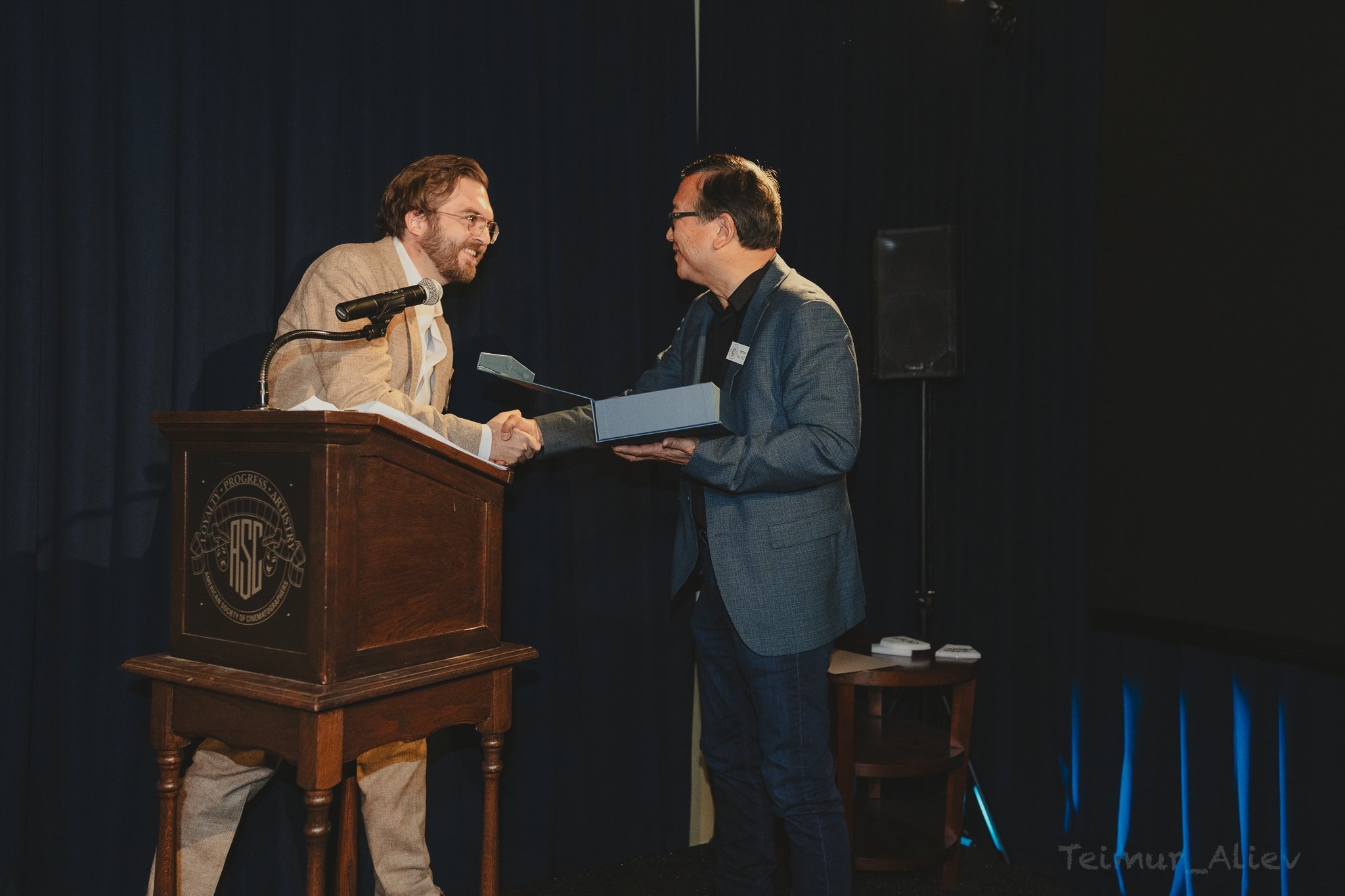
Zach Morrison, a 2024 graduate of the American Film Institute, won the prize for The Witch Pricker and the Hair, a film that follows an accuser of witches in 1690s Scotland. Morrison noted that it was particularly meaningful to receive an award dedicated to Metz, as he has a tattoo of the shark from Jaws. “It’s a testament to the power of the image that you can create,” he said.
Morrison told American Cinematographer that it was “an absolute honor” to win the award, and that “it’s a great time to be in this room and to share with other amazing cinematographers.” The filmmaker stressed the importance of community on the making of The Witch Pricker and the Hair. Morrison shot the project on 3-Perf 35mm using 12,000 feet of whatever film stock friends and colleagues at AFI were willing to donate. “FotoKem tossed us a finishing grant, which helped us a lot, [and] Panavision was a great support,” Morrison said, noting that he shot on Panavision Primo lenses throughout the project. “One of the major things we experimented with was underexposure. We were really pushing the stock to the edge. The gaffer, who was a classmate, would look at us and say, ‘Are you sure?’ and I’d say, ‘Let’s go a little bit darker.’”
Catching up with American Cinematographer after the ceremony, Goi spoke about the significance of the Heritage Awards. “These awards are not just about handing a trophy or plaque to somebody. It’s really about telling these filmmakers that their work is significant and that they have validity in this industry.” The filmmaker acknowledged the kind of moment winning one of these awards can give a burgeoning talent in the industry. “Cinematographers who have won this award in the past say it’s a huge boost for them. Filmmakers they look up to, [whom they see] as being at the pinnacle of the cinematography craft, recognize that they have innate talent, that they have an eye and an imagination for visual storytelling, and that’s huge.”
Photos by Teimur Aliiev.




